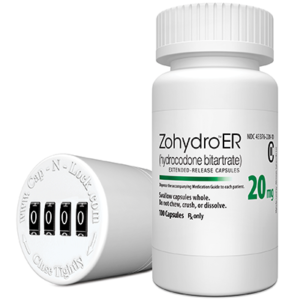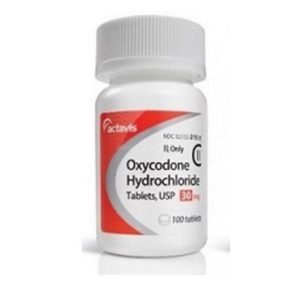3 Opioid (Narcotic) Pain Medications Frequently Used
3 Opioid (Narcotic) Pain Medications Frequently Used

The Most Famous 3 Opioids most Commonly used as Opioid Analgesics are:

HYDROcodone

- Brand Names: Zohydro ER
- Therapeutic Category: Analgesic, Opioids
- Dosage Forms: Oral (Tablet, capsule)
- Use: Labeled Indications:
- Control of exhausting, nonproductive cough. In addition to Management of pain severe enough to require daily around-the-clock opioid
- Dosing : Adult: Cough: Usual dose: 5 mL every 4 hours.
- Firstly, maximum single dose: 15 mL/dose.
- Secondly, maximum total daily dose: 30 mL in 24 hours.
- Pain management:
- Zohydro ER: Initial: 10 mg every 12 hours. Dose increases may occur in increments of 10 mg every 12 hours every 3 to 7 days as needed to achieve adequate analgesia.
Dose Adjustments
- Renal Impairment: Moderate to severe impairment: Initial: Start with 50% of the initial dose; titrate carefully; monitor closely.
- Additionally, In End-stage renal disease (ESRD): Initial: Start with 50% of the initial dose; titrate carefully; monitor closely.
- Hepatic Impairment: Mild to moderate impairment:
- Hysingla ER, Zohydro ER: No dosage adjustment necessary.
- Adverse Drug Interaction:
Constipation, nausea, Hypertension, peripheral edema, Headache, chills, and sedation
- Pharmacodynamics/Kinetics:
- Then, the Half-life elimination: Hysingla ER: 7 to 9 hours; Vantrela ER: 11 to 12 hours; Zohydro ER: 8 hours (plasma)
- Time to peak, plasma: Hysingla ER: 6 to 30 hours; Vantrela ER: 8 hours; Zohydro ER: 5 hours
- Important Notes:
- Notably, Hydrocodone ER exposes patients and other users to the risks of opioid addiction, abuse. In addition to this misuse can lead to overdose and death.
- Pregnancy & Lactation: Prolonged maternal use of opioids during pregnancy.
- In additiont to, cause neonatal withdrawal syndrome in the newborn/ present in breast milk.
- Medication Safety Issues: Additionally, HYDROcodone may be confused with HYDROmorphone, oxyCODONE, and oxymorphone

Morphine

- Brand Names: MS Contin
- Therapeutic Category: Analgesic, opioids
- Dosage Forms: Oral (Tablet, capsule, solution)/ IV solution
- Use: Labeled Indications:
- Pain management
- Off Label: Management of pain in mechanically ventilated patients.
- Dosing : Adult : IM, SubQ: Initial: Opioid naive: 5 to 10 mg every 4 hours as needed.
- The usual dosage range: 5 to 15 mg every 4 hours as needed.
- In addition to, patients with prior opioid exposure may require higher initial doses.
- IV: Initial: Opioid naive: 2.5 to 5 mg every 3 to 4 hours.
Dose Adjustments
- Renal Impairment: no specific dosage adjustments
- Hepatic Impairment: no dosage adjustment
- Adverse Drug Interaction:
Drowsiness, headache, Constipation, nausea, vomiting, Peripheral edema, and chest pain
- Pharmacodynamics/Kinetics:
- Onset of action (patient dependent; dosing must be individualized): Oral (immediate release): 30 minutes
- Duration: Immediate-release formulations (tablet, oral solution, injection): 3 to 5 hours
- Bioavailability: Oral: 17% to 33%
- Time to peak: Plasma: tablets, oral solution, epidural: 1 hour
- Important Notes:
- Firstly, Morphine exposes patients and other users to the risks of opioid addiction, abuse, and misuse, which can lead to overdose and death.
- Additionally, assess each patient’s risk prior to prescribing morphine and monitor all patients regularly for the development of these behaviors and conditions.
- Pregnancy & Lactation: Firstly, prolonged maternal use of opioids during pregnancy.
- Moreover, It can cause neonatal withdrawal syndrome in the newborn/ present in breast milk.
- Medication Safety Issues:
- Morphine may be confused with HYDROmorphone, methadone
- Morphine sulfate may be confused with magnesium sulfate
- Roxanol may be confused with OxyFast, Roxicet, Roxicodone

OxyCODONE

- Brand Names: Roxicodone
- Therapeutic Category: Analgesic, opioids
- Dosage Forms: Oral (Tablet, capsule, solution)
- Use: Labeled Indications:
- Management of acute or chronic moderate to severe pain
- Dosing : Adult : Immediate release: Initial: 5 to 15 mg every 4 to 6 hours as needed.
- The dosing range: 5 to 20 mg per dose.
- For severe chronic pain, administer on a regularly scheduled basis, every 4 to 6 hours, at the lowest dose that will achieve adequate analgesia.
Dose Adjustments
- Renal Impairment: CrCl <60 mL/minute: Serum concentrations are increased 50%.
- Furthermore, Initiate at the low end of the dosage range.
- Hepatic Impairment: Immediate release: Initiate therapy at 33% to 50% the usual dosage and titrate carefully.
- Adverse Drug Interaction:
In addition to drowsiness, headache, it cause dizziness, and Pruritus.
- Pharmacodynamics/Kinetics:
- Onset of action: Pain relief: Immediate release: 10 to 15 minutes
- Peak effect: Immediate release: 0.5 to 1 hour
- Duration: Immediate release: 3 to 6 hours
- Important Notes:
- Oxycodone exposes patients and other users to the risks of opioid addiction, abuse, and misuse.
- This can lead to overdose and death.
- Additionally, Assess each patient’s risk prior to prescribing oxycodone.
- In addition to, monitor all patients regularly for the development of these behaviors or conditions.
- Concomitant use of opioids with benzodiazepines or other CNS depressants, including alcohol, may result in profound sedation, respiratory depression, coma, and death.
- Pregnancy & Lactation:
- Firstly, Prolonged maternal use of opioids during pregnancy can cause neonatal withdrawal syndrome in the newborn.
- In addition to, this syndrome may be life-threatening if not recognized and treated according to protocols developed by neonatology experts/ present in breast milk.
- Medication Safety Issues: OxyCODONE may be confused with HYDROcodone, oxybutynin, OxyCONTIN, and oxyMORphone
Importantly, OxyCONTIN may be confused with MS Contin, oxybutynin, oxyMORphone
Read More:
Copyright ©: All content on FADIC Website, including medical opinion and any other health-related information, and drug Informtation is for informational purposes only

 Log in
Log in Sign up
Sign up





